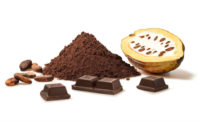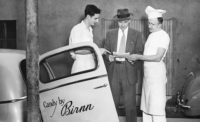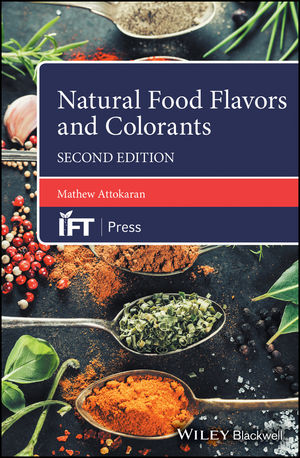Ritter racks up 100 years
A happy centennial anniversary for the world’s favorite chocolate squares


|
Red, brown, yellow, or green? That’s code for Ritter Sport’s marzipan, butter biscuit, cornflakes, and whole almond varieties. But whether consumers decide to pick by color or flavor, chances are they won’t be disappointed. Moreover, for the past century, the company’s continued success proves it will have no trouble keeping customers happy for years to come.
Alfred Ritter GmbH & Co. KG is celebrating a centennial of serving up chocolate, this year.
Founded in 1912 by husband and wife duo Alfred Eugen Ritter and Clara Ritter, the German chocolate company is known today for its unique chocolate squares.
“We always maintain our identity as the square bar in everything we do,” says Elek Schneider, regional market development manager, USA.
But Ritter wasn’t always tied to its trademark shape. The past century has brought changes to the company which has become for many a global chocolate icon. For one thing, it didn’t start making those signature squares until 1932.
And, despite the fact that Ritter Sport is a present-day chocolate mogul, a century of chocolate-making encompasses a past rich with memories.
“One hundred years means history and maintaining a tradition,” says Schneider.
A Sweet Centennial
Today, Ritter is a family-owned company currently run by the third generation.
“We have families who work at the company who have been there since it was founded,” explains Schneider. “It’s a third generation of not just owners, but of families who have worked at the company.”
When newlyweds Alfred and Clara founded the “Alfred Ritter Cannstatt” chocolate and confectionery factory in Bad Cannstatt, Germany in 1912, it took the entrepreneurs seven years before they brought their own chocolate brand, Alrika, to the market.
In 1930, the company moved to its present location of Waldenbuch, Germany, after the number of their employees doubled in just six years.
But the square chocolate consumers all know and love wasn’t born just yet. At the time, the company offered only long chocolate bars, pralines and holiday products.
It wasn’t until two years later that Ritter’s trademark chocolate square was introduced. Originally proposed by Clara Ritter, the idea quickly gained popularity within the family.
“We’ll make a chocolate that fits into the pocket of every sports jacket, doesn’t break, and still weighs the same as a normal long bar of chocolate,” she said. They decided to call it “Ritter’s Sport Chocolate” because the square fit perfectly in the pockets of men’s sport jackets.
The shape quickly gained unprecedented popularity. When the reins were passed down to the founders’ son, Alfred Otto Ritter, in 1952, the second-generation chocolatier decided to gradually phase out the company’s long chocolate bars and other products. The decision to focus solely on developing the square brand would forever change the company’s future.
It paid off. In 1970, Ritter acquired national recognition. That year, the company launched its “yogurt” variety and aired its first commercial to all of Germany. Their slogan, “Quality. Chocolate. Squared.” was broadcast on televisions all over the country.
Four years later, Otto Ritter decided the popular chocolate squares were missing something: color. To make his products more distinctive, each variety was assigned a unique color to characterize it. Then, in 1982, the “mini” version debuted. Today, the company offers 23 varieties, each one carrying a distinct color.
For Ritter, success doesn’t just mean selling more chocolate; it dovetails with being environmentally engaged and giving back.
For example, in 1990, the company decided to support Project Nicaragua, a private development project in Nicaragua that combines agricultural and forestry farming methods to promote the cultivation and production of organic cocoa. Farmers are encouraged to plant “nurse crops” such as cocoa to stop extensive land cultivation and deforestation.
Today, the company operates as a single facility in Germany with 800 employees. It uses all-natural ingredients and flavorings in all its products and distributes the trademark squares to 90 countries worldwide.
Ritter currently has 18 different varieties in the United States and 23 in Germany, packaged in a range of colors from white for the “yogurt” flavor, to yellow for the “cornflakes” flavor. The company also makes additional limited-edition flavors, which are released periodically.
“You’d be hard-pressed for anyone to not find something they like in our assortment,” says Schneider. “We offer just about everything to everybody."
A Square Celebration
So how exactly does a world-leading chocolate manufacturer celebrate its 100th birthday?
With chocolate, of course. In Germany, the company is releasing a limited-edition “edel-nuss mix” chocolate bar, German for “premium nut.” The square bar, which will be released only in the company’s home country, is a milk chocolate bar with a blend of crushed almond, macadamia, and cashew nuts. Ritter also will have a company-wide celebration for its employees and their families this summer.
As for the rest of the world, Ritter has developed a special anniversary logo comprised of little chocolate squares, à la the products themselves. The company will use the logo on its sales materials, displays and advertising.
“Anywhere that we can communicate the anniversary to consumers and the trade is what we’re going to be doing throughout the year,” says Schneider.
Ritter also plans to introduce new flavor varieties into the market. The company recently launched an “espresso” flavor, a milk chocolate bar with an espresso filling made with 100% Arabica beans. In keeping with the brand’s color scheme, the bar comes in its own distinctive packaging and has a unique dark brown color.
This summer, the company also will release two limited-edition chocolate bars — an “amarena cherry” flavor will hit shelves for the first time, while the “wild berry yogurt” flavor will make its second debut since its introduction last summer.
As for the future, Ritter hopes to maintain its standards for high quality chocolate, ingredients, and flavor profiles, and to never lose its sense of heritage and tradition.
“We hope to offer continued high quality chocolate bars made with the best and finest ingredients and unique flavor profiles, and to deliver exactly what consumers expect when they hear about and know Ritter Sport,” says Schneider.
Alles gute zum geburtstag, Ritter — Happy birthday.
Looking for a reprint of this article?
From high-res PDFs to custom plaques, order your copy today!








